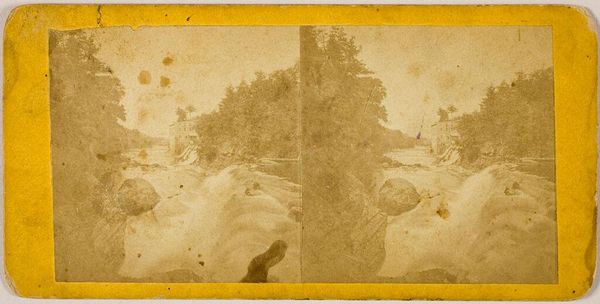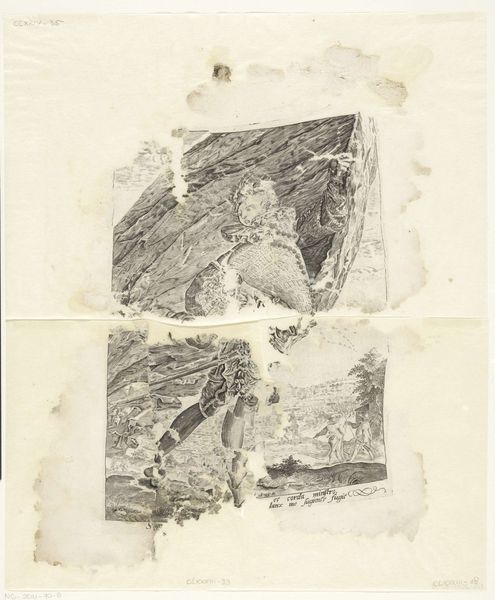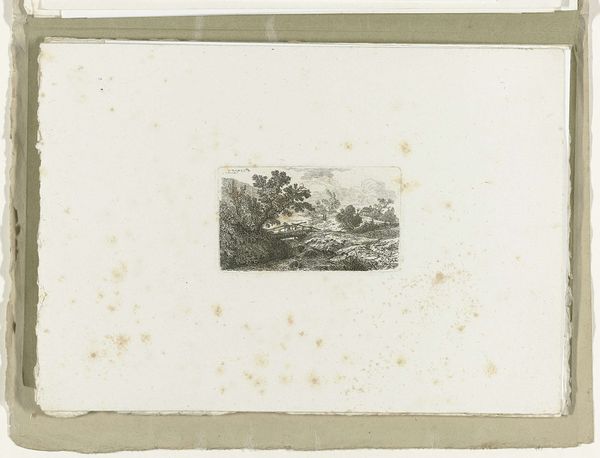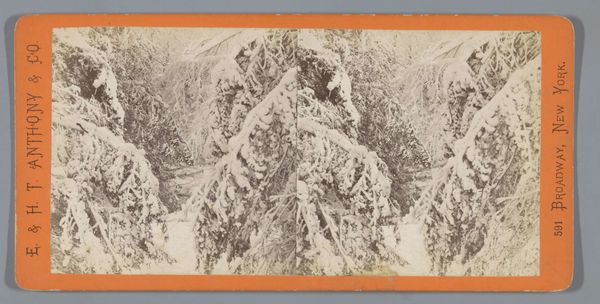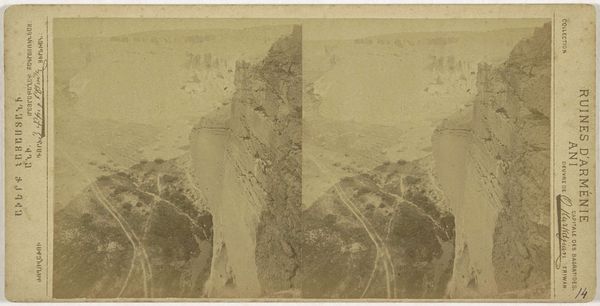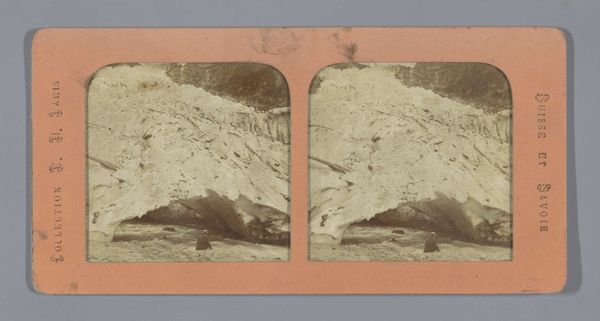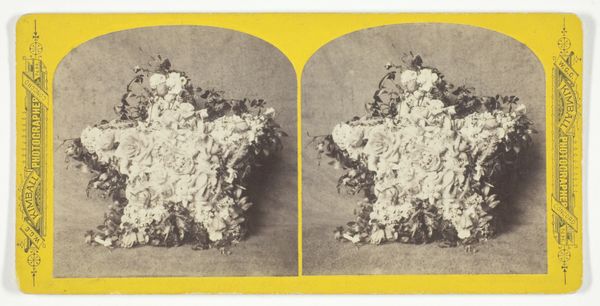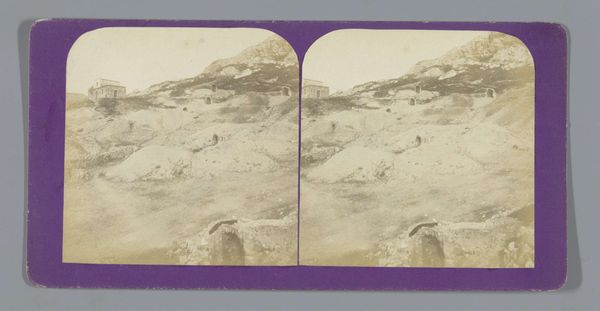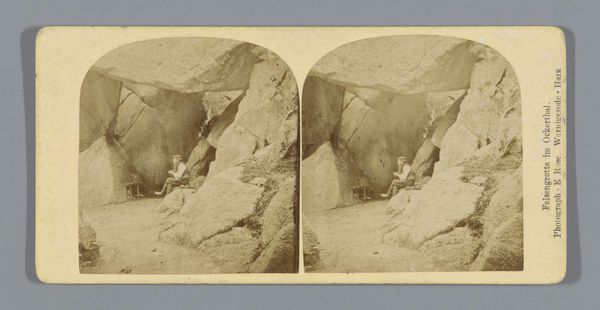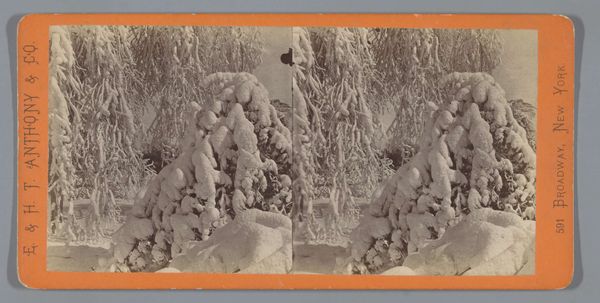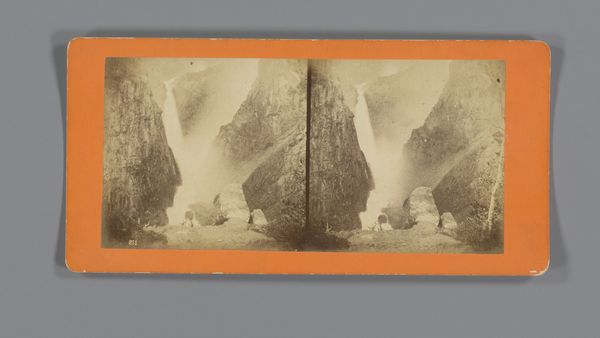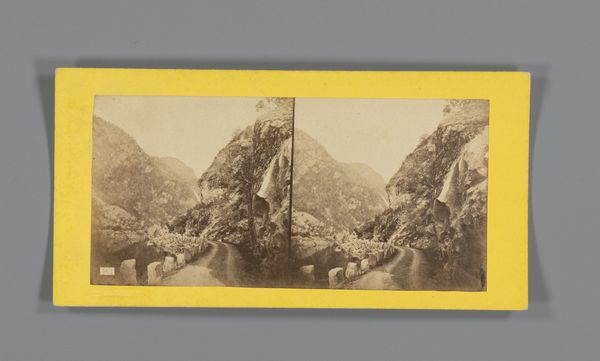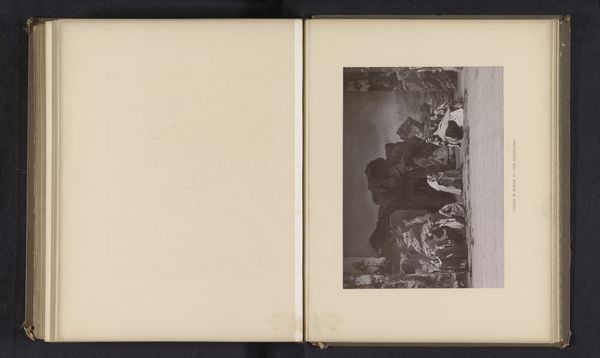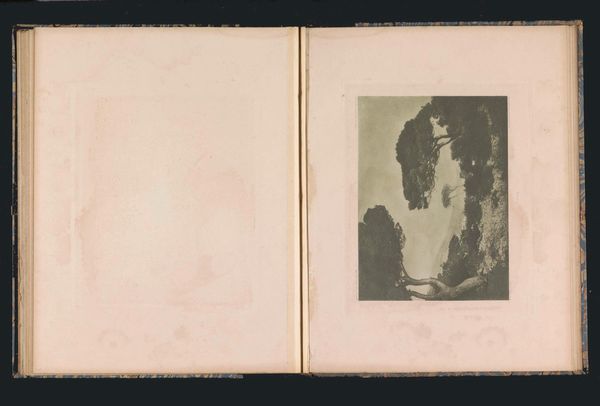
Dimensions: height 87 mm, width 176 mm
Copyright: Rijks Museum: Open Domain
This stereograph, IJsschotsen bij de American Falls, was made by an anonymous photographer in the late 19th century, using a camera and darkroom processes. The image is a double exposure, creating a three-dimensional effect when viewed through a stereoscope, a popular form of entertainment at the time. The material is paper, treated with light-sensitive chemicals, and the process involved careful timing and manipulation of light. The photographic process itself was labor-intensive, requiring skilled technicians to prepare the chemicals, expose the plates, and develop the prints. The rise of photography was closely tied to industrial capitalism, with companies mass-producing cameras and photographic materials for a growing consumer market. Stereographs like this one offered a glimpse into distant lands and exotic locales, fueling a sense of adventure and wanderlust. Yet the production and consumption of these images also relied on complex networks of labor, capital, and technology, often obscured from view. Understanding the material and social context of this photograph allows us to appreciate its full significance, challenging traditional notions of authorship and artistic creation.
Comments
No comments
Be the first to comment and join the conversation on the ultimate creative platform.
